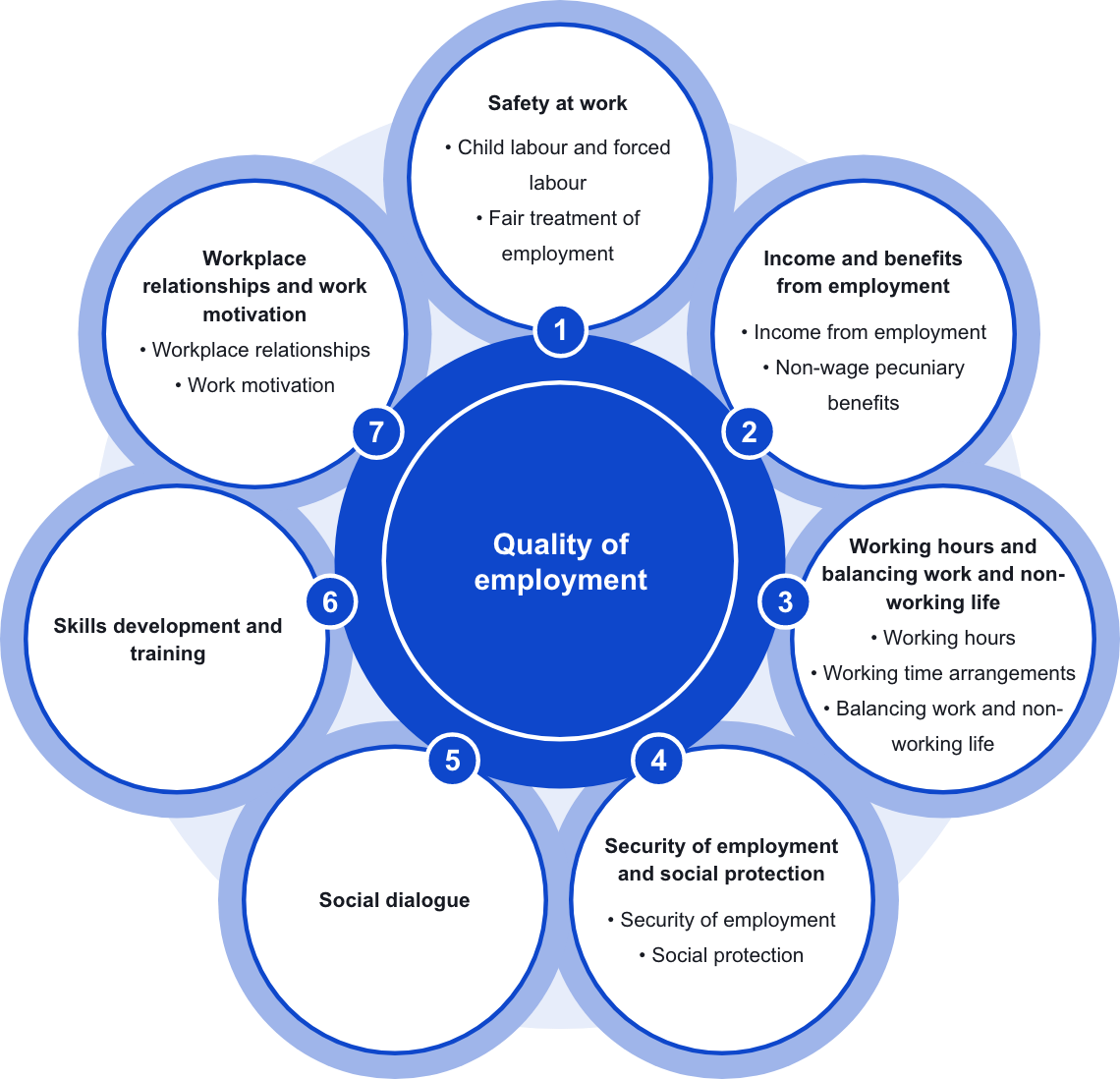Quality of employment
In many countries, the types of jobs have changed over the past decades, and policymakers are more interested in the conditions under which people work. Therefore, measuring the quality of employment has become more important.
Concepts and definitions
The framework developed under the leadership of the United Nations Economic Commission for Europe (UNECE) represents a neutral and complete approach to assessing employment quality in all its elements. It defines 68 indicators in seven dimensions that address employment quality from the perspective of the employed person. Its design also allows for international comparison.
The handbook on measuring quality of employment, published by UNECE, explains the framework for statistical institutes, researchers and policy users who want to build and analyse datasets.
A more detailed overview of the UNECE framework, its background and the data sources used by Eurostat to calculate the indicators can be found in this document on UNECE indicators on quality of employment.
Dimensions of quality of employment

Data available in Eurostat's database
Eurostat has gathered data on employment quality for EU countries using the UNECE framework which are available in the Eurostat database.
Sources for 42 of the 68 indicators are the following:
- labour force survey (LFS)
- European working conditions survey from Eurofound (EWCS)
- European statistics on accidents at work (ESAW)
- Structure of earnings survey (SES)
- Statistics on income and living conditions (SILC)
This information can be supplemented with detailed contextual information from the Eurostat database, such as on employment or unemployment figures or data on the overall economic trend (GDP).
Further reading
- Leaflet: Measuring quality of employment
